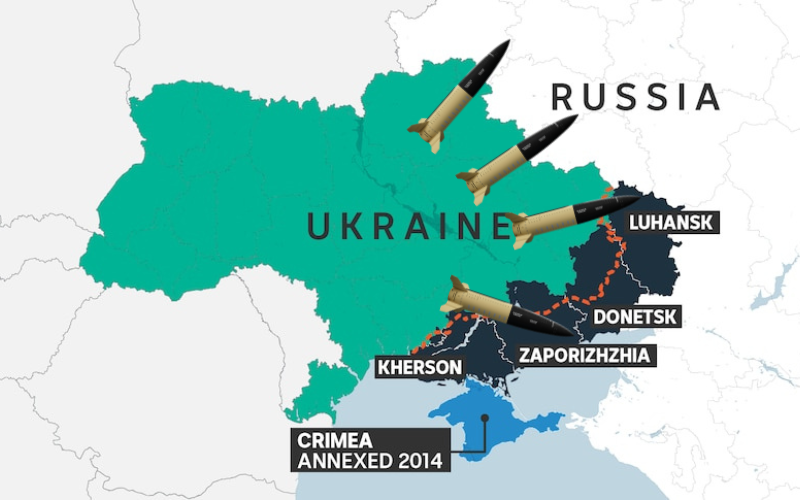Election 2024: A Last-Minute Election Bombshell Reshapes the Presidential Race
As the hours tick away to election day, the political landscape is experiencing a seismic shift. Just a day after a shocking poll from Iowa, new surveys have dropped another bombshell, revealing a decisive lead for one candidate in multiple battleground states. With the stakes higher than ever, this last-minute data has upended expectations, sending one campaign into a frenzy. Record-breaking turnout only intensifies the suspense, making this presidential race one for the history books.
Breaking Down the Polls
Let’s dive into the polls and examine how this development might shape the final outcome.
North Carolina: A Surprising Tilt
One of the most shocking polls comes out of North Carolina, a state that has emerged as one of the most closely watched battlegrounds in this election. The New York Times/Siena poll shows Harris holding a two-point edge, creating a surprising shift toward blue just a day before the election. This is a state Trump won by 4% in 2016 and by 1% in 2020. Early voting numbers further highlight the race’s uniqueness, with nearly 4.5 million ballots already cast: 33% Republican, 32% Democrat, and 35% falling into the other category. High turnout among core Democratic groups hints at a rare opportunity for Harris to turn North Carolina blue for the first time in 16 years, dealing a huge blow to Trump’s electoral map.
West Coast Stronghold
On the West Coast, Harris holds a substantial 19-point advantage in Washington, firmly positioning the state as solid blue. Washington’s deep-rooted Democratic leanings and history of support keep it securely in Harris’s column. Further down in Oregon, Harris sustains a strong double-digit lead, placing it confidently in the likely blue category. This stable margin reinforces Harris’s foothold on the West Coast, contributing to a consistent Democratic alignment throughout the region.
In California, where Harris has long-standing political ties, she commands a 24-point lead, underscoring the state’s solid blue status. California’s steadfast support strengthens Harris’s dominance along the coast, securing the West as a key Democratic block in this election.
Battleground Nevada
Nevada continues to be a highly contested battleground this cycle. The New York Times poll shows Harris ahead by a three-point margin, creating a new dynamic in this traditionally competitive state. Clark County, Nevada’s largest and a crucial Democratic base, will be key to Harris’s path to victory. Although Republicans have made gains recently, Harris’s campaign is banking on high turnout in Democratic areas to hold Nevada in her column. With election day tomorrow, the state remains on a knife’s edge, with both campaigns making an all-out effort in these critical final hours.
Arizona: A Red Shift
Arizona has been another intense battleground, with the new poll placing Trump ahead of Harris by a notable four-point margin. This unexpected lead shifts Arizona further into the lean red category. Maricopa County, which accounts for approximately 60% of Arizona’s total votes, remains a crucial area to watch. Any swing here could reshape the state’s outcome. Harris’s campaign has intensified its focus in Maricopa, recognizing that closing the gap in this key county is essential for flipping Arizona.
Midwest Battlegrounds
The Midwest is a region both campaigns are intensely focused on. Harris is aiming to secure Minnesota along with the pivotal blue wall states of Wisconsin, Michigan, and Pennsylvania. These states are essential to her path, especially considering Trump’s notable 2016 victories there. Polls across the Midwest reveal neck-and-neck races, making this area a potential election decider.
In Minnesota, Harris holds a 5.7% lead, positioning the state as lean blue. While this margin has seen a slight dip, Minnesota’s decades-long Democratic trend and its robust base of Democratic voters suggest it will remain in Harris’s favor.
Key States to Watch
Pennsylvania: With its crucial 19 electoral votes, Pennsylvania stands as one of the most decisive battlegrounds this election cycle. Currently, Harris and Trump are locked in a tight race, tied at 48% in the New York Times poll. Early voting trends lean toward the Democrats, with close to 1.8 million ballots cast so far, 57% from Democrats and 33% from Republicans. For now, Pennsylvania remains a tossup, and a victory here could be pivotal in defining Harris’s path to the presidency.
Georgia: Georgia, with its pivotal 16 electoral votes, stands as one of the most critical battlegrounds this election. Recent polls show Harris ahead by a slim 1%, raising the stakes for both campaigns. If Harris can secure Georgia and maintain her lead in other key states like Arizona and Pennsylvania, her path to victory strengthens considerably.
Wisconsin: In Wisconsin, Harris has a two-point advantage, a crucial lead in this notoriously competitive state. With high voter turnout expected in Milwaukee County, Wisconsin is currently leaning tilt blue, though both campaigns are fiercely targeting it as a critical battleground.
Michigan: Siena polls show a deadlock at 47% each, underscoring Michigan’s role as a true tossup. The UAW strike emphasizing the importance of working-class voters, labor support could be decisive as both campaigns focus intensely on Michigan’s 15 electoral votes.
The Central US and Texas
In the central US, Trump commands significant leads in Wyoming, Utah, and Idaho, where his previous winning margins have reached between 20 and 40 points. Montana also remains solidly Republican, with Trump currently holding an 18-point advantage.
Texas shows Trump with a 7.8-point lead, reflecting a slight improvement from his 2020 performance, placing the state comfortably in the lean red column. Harris’s team is monitoring demographic shifts here, recognizing Texas’s long-term potential.
Southeast Dynamics
In the Southeast, Trump’s support holds strong across several states. Missouri, Arkansas, Louisiana, Mississippi, and Alabama remain solidly in his column. Trump enjoys a 23-point lead in Tennessee and comfortable margins in Kentucky and West Virginia. South Carolina, too, is classified as likely red, underscoring the GOP’s strong presence in the region.
Florida: Florida has increasingly leaned toward the GOP, as evidenced by Trump’s three-point victory in 2020 and Ron DeSantis’s significant 20-point win in the 2022 gubernatorial race. With Trump currently leading by seven points, Florida remains in the lean red category, although Harris’s stronger performance relative to Biden’s in recent polls suggests the race could tighten as election day draws near.
Northeast and Strong Democratic Holds
In the Northeast, Harris holds steady with several states firmly in her favor. Vermont, Connecticut, Delaware, Massachusetts, Rhode Island, Maryland, and Washington DC remain solidly Democratic. Even New Jersey appears secure for Harris, despite recent challenges faced by Democrats in the state.
In New York, Harris has a comfortable lead of 14 points, marking it as a solid blue state. New Hampshire is in the lean blue category for Harris, with polls indicating a lead of 6.6%. Maine, however, offers a more nuanced outlook. Harris leads statewide by 17 points, although Maine’s electoral history has been less predictable. Clinton’s margin in 2016 was just 3%, with Biden’s less than 10%. Harris appears secure in Maine’s First District, but the Second District leans red, reflecting Trump’s past success there.
Final States and the Electoral Map
With the electoral map now complete, these final New York Times/Siena poll numbers reveal a map that is unprecedented. Harris holds leads of 49-46 in Nevada, 48-46 in North Carolina, 49-47 in Wisconsin, and 48-47 in Georgia. This would give her the win and put her in the White House, even without Pennsylvania and Michigan, which are locked in a tie. Trump maintains a 49-46 edge in Arizona, making it one of his strongest footholds.
This projection suggests that Harris is on the brink of a historic victory. Yet, this is merely a projection based on recent polling data and trends, and things can shift quickly. As we enter the final stretch, every single vote counts. Stay informed, check multiple sources, and follow updates from trusted sources as election day approaches.
Table: Key Battleground States and Polling Data
| State | Candidate Lead | Polling Data (New York Times/Siena) | Electoral Votes | Classification |
|---|---|---|---|---|
| North Carolina | Harris | 48% Harris, 46% Trump | 15 | Lean Blue |
| Nevada | Harris | 49% Harris, 46% Trump | 6 | Lean Blue |
| Arizona | Trump | 49% Trump, 46% Harris | 11 | Lean Red |
| Georgia | Harris | 48% Harris, 47% Trump | 16 | Tilt Blue |
| Pennsylvania | Tie | 48% Harris, 48% Trump | 19 | Tossup |
| Wisconsin | Harris | 49% Harris, 47% Trump | 10 | Lean Blue |
| Michigan | Tie | 47% Harris, 47% Trump | 15 | Tossup |
This table reflects the latest polling data from the New York Times/Siena, highlighting the tight races and potential shifts in key battleground states.
FAQ
Q: What are the key battleground states in this election? A: The key battleground states include North Carolina, Nevada, Arizona, Georgia, Pennsylvania, Wisconsin, and Michigan. These states are critical for determining the final outcome of the election.
Q: How has early voting impacted the election predictions? A: Early voting has shown high turnout among core Democratic groups, especially in battleground states like North Carolina and Pennsylvania. This suggests strong early enthusiasm for Harris, potentially shifting the electoral map in her favor.
Q: What is the significance of high voter turnout in this election? A: High voter turnout can significantly impact the election, particularly in battleground states. It indicates heightened voter engagement and can lead to unexpected shifts in traditionally competitive states.
Q: How reliable are the latest polls? A: While the latest polls provide valuable insights, they are projections based on current data and trends. Actual election outcomes can differ, emphasizing the importance of voting and staying informed.
Q: What states are considered solidly Democratic or Republican? A: States like California, New York, and Washington are solidly Democratic, while states like Texas, Wyoming, and Alabama are solidly Republican. These states have strong historical alignments with their respective parties.
Q: How might last-minute shifts in polling data affect the final election outcome? A: Last-minute shifts can upend expectations and create new dynamics in the race. With high stakes and record-breaking turnout, these shifts make the final hours of the election critical for both campaigns.














1 comment